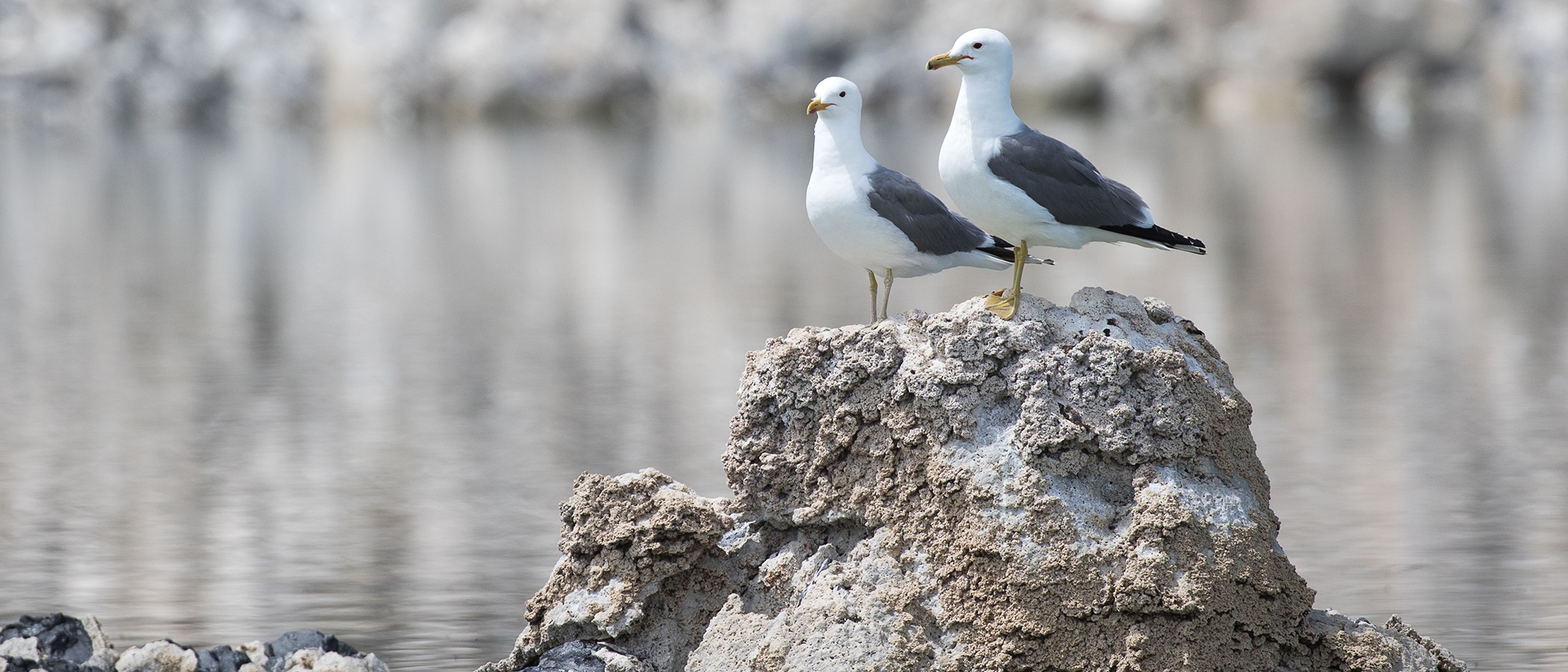
If you were lucky enough to be in the Mono Basin—or if you checked out the webcam—the past two crystal clear, glassy water, calm days, you likely would have noticed something unusual rising out over Mono Lake—smoke.
There is no cause for alarm, it’s actually a good sign—especially for California Gulls whose nesting grounds on the Negit Islets are being cleared of an invasive weed in time for the 2020 nesting season.
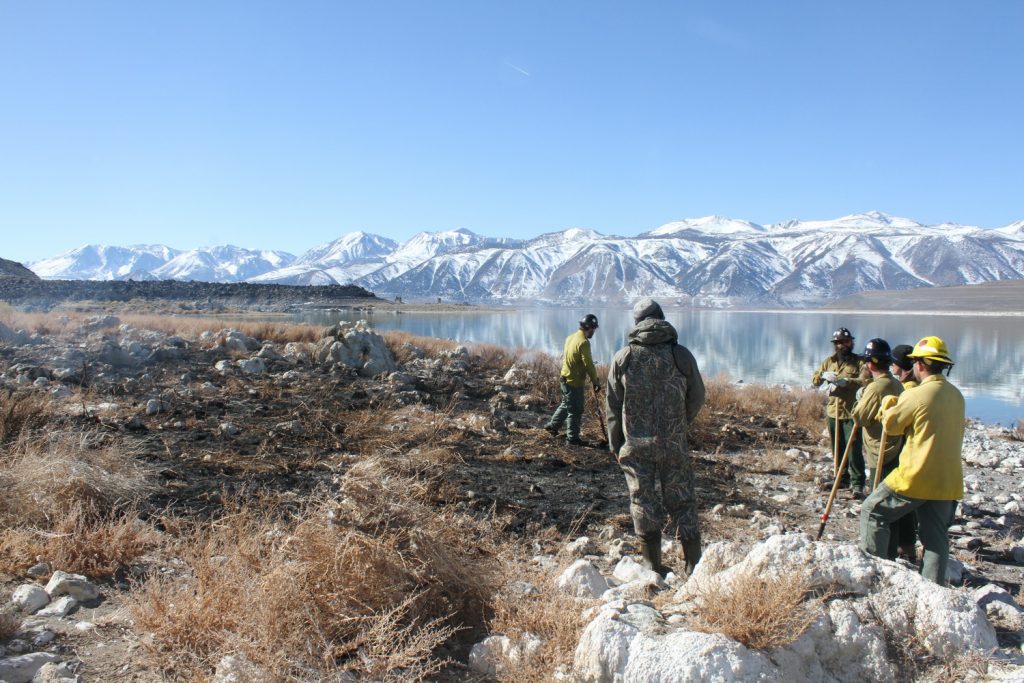
In a partnership born out of a mutual interest in this critical wildlife habitat protection effort in the Mono Basin National Forest Scenic Area, the Inyo National Forest, the Mono Lake Committee, and Point Blue Conservation Science have been planning and working towards a solution to the recent invasion of Bassia hyssopifolia for three years. The smoke rising from the islets is from a prescribed burn being done to protect gull nesting habitat.
The Mono Lake Committee advocated for a prescribed burn by alerting the Inyo National Forest to the issue, convening agency and research partners, providing logistical support, equipment, and securing funding from the outdoor clothing company Patagonia to assist with this critical habitat restoration action for the gulls. Committee staff are captaining our new 16-foot research boat to ferry Forest Service fire personnel, volunteers, and equipment to and from the islets. And key to the equation—the Inyo has rustled up a set of skilled firefighters to make this extraordinary action possible. The Inyo National Forest, with its partners, is looking at all viable options for a long-term control plan for Bassia.
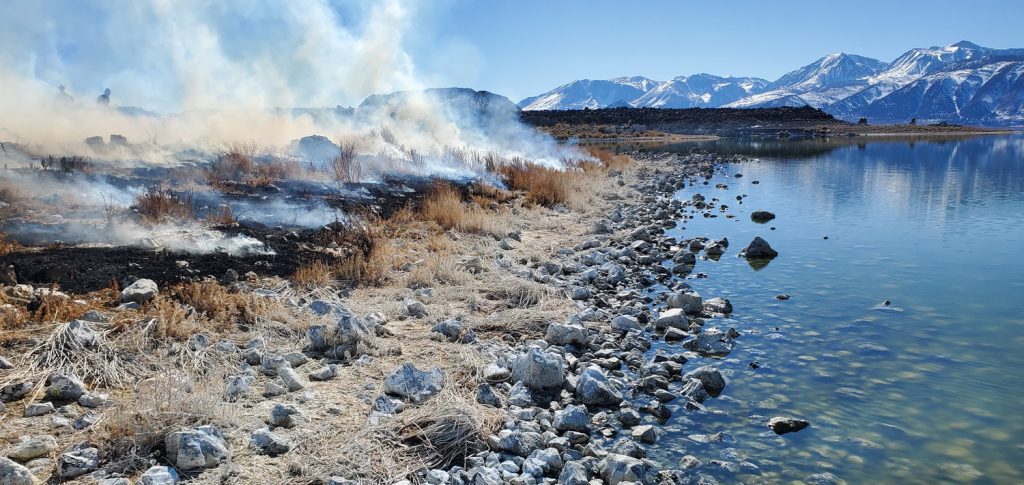
The islets of Mono Lake are crucial nesting habitat for one of the worlds’ three largest colonies of California Gulls (Larus californicus). Annually, an average of over 46,000 California Gulls nest at Mono Lake, with the population fluctuating as high as nearly 65,000 breeding individuals. Because nesting density is high (up to at least 0.67 nests/m2), nearly every square meter of the islets is important for nesting gulls.
The case for action
Point Blue Conservation Science has monitored the gull population at Mono Lake since 1983 in partnership with the Mono Lake Committee. California Gull population health is an indicator used to assess the overall health and recovery of Mono Lake following decades of excessive water diversions, and ongoing studies help guide the long-term management of the lake ecosystem. Point Blue biologists documented an alarming and extremely rapid invasion of Bassia weeds on the Negit islets in 2017.
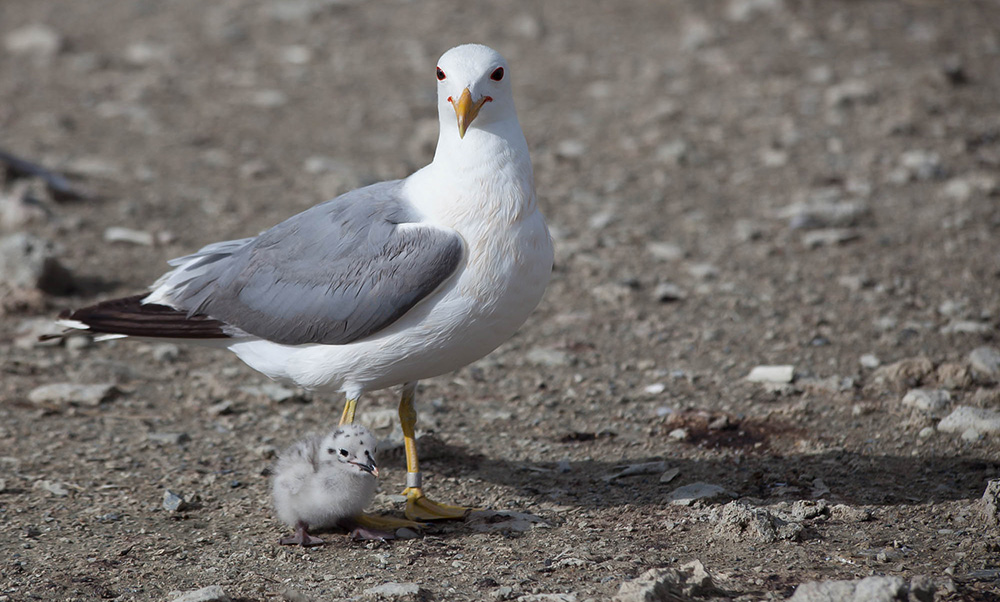
The Eurasian invasive plant now covers an estimated 70% or more of the Negit Islets in Mono Lake. It can grow over three feet tall and has transformed the formerly open-ground nesting habitat into an almost impenetrable brushy thicket. Gulls select open ground areas for nesting and the tangled mass of non-native vegetation has increasingly prevented them from nesting at Mono Lake.
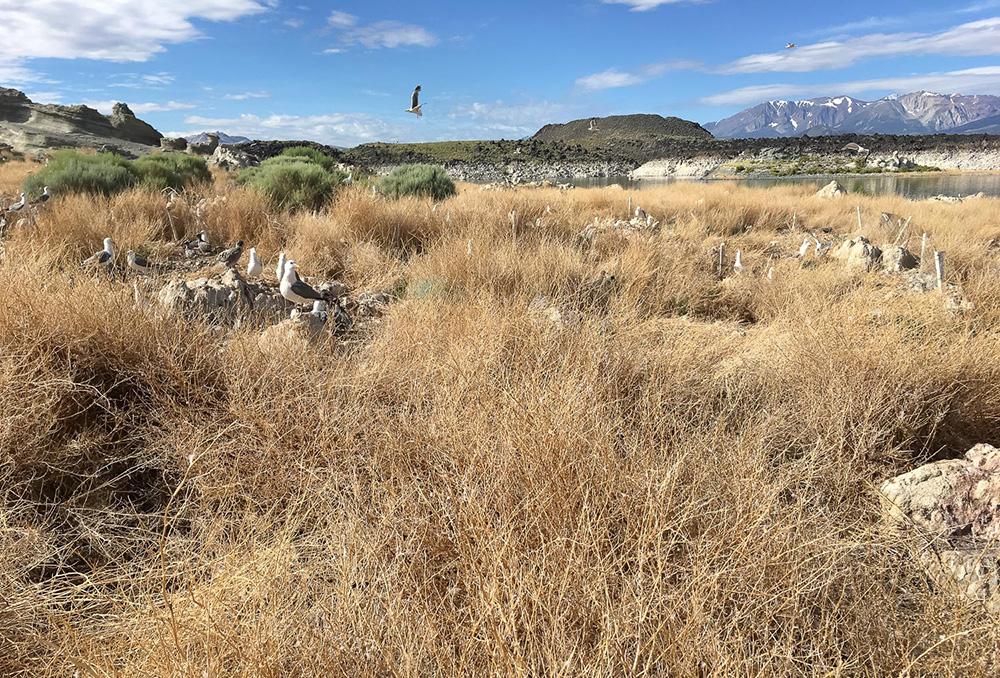
In 2019 ninety-one percent of the gulls nested on the Negit Islets and 9% nested on the Paoha Islets. Of the individual islets, Twain was the most populous, supporting 7,601, or 69%, of the lake-wide total number of nests. Little Tahiti islet was the next most populous islet, containing 1,230, or 11%, of nests.
Uncharted weed territory
Efforts at hand-pulling the weed have proven effective at clearing areas to allow for nesting, but mobilizing the large labor force needed to treat 70 acres at the remote nesting location is a significant logistical and safety challenge for volunteers. After much consideration, the partners concluded the most efficient course of action was to pursue a prescribed burn.
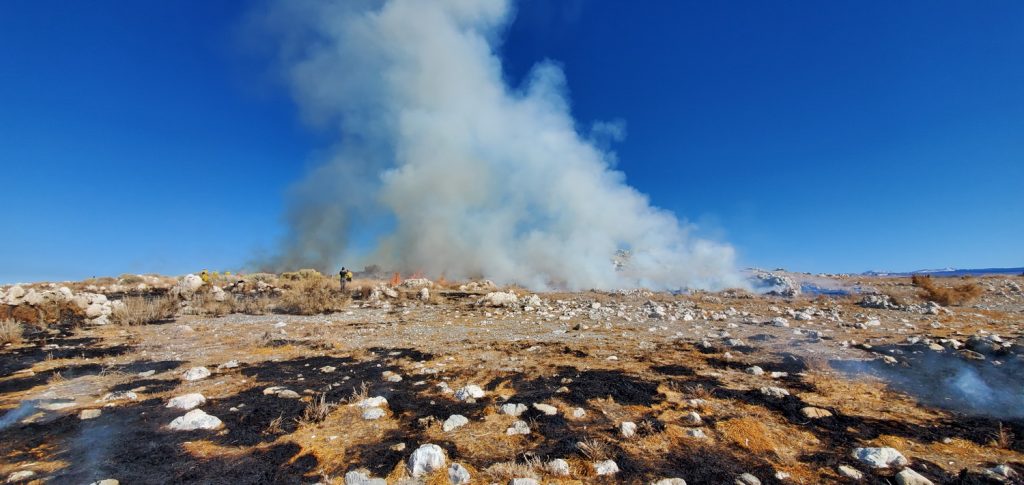
Plans for a prescribed burn have been underway for three years, but the additional logistical challenges of doing a burn on the Islets, outside the nesting season, with the variable Mono Basin weather conditions, and firefighting capacity pressure from extreme statewide fire seasons have thwarted previous plans.
The firefighters out there this week are testing different strategies, including hand-pulling and piling the weeds into focused burn piles. This burn is expected to provide both immediate and multi-year benefits, but future weed growth will be closely monitored and documented for evaluation. Ideally the burn would happen once, and then a combination of monitoring and hand-pulling weeds and lake level rise will manage the issue.
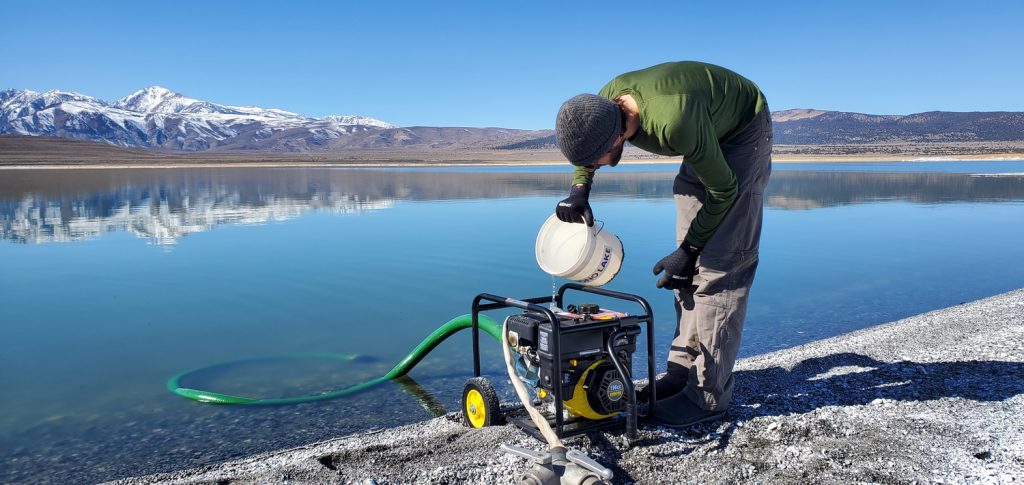
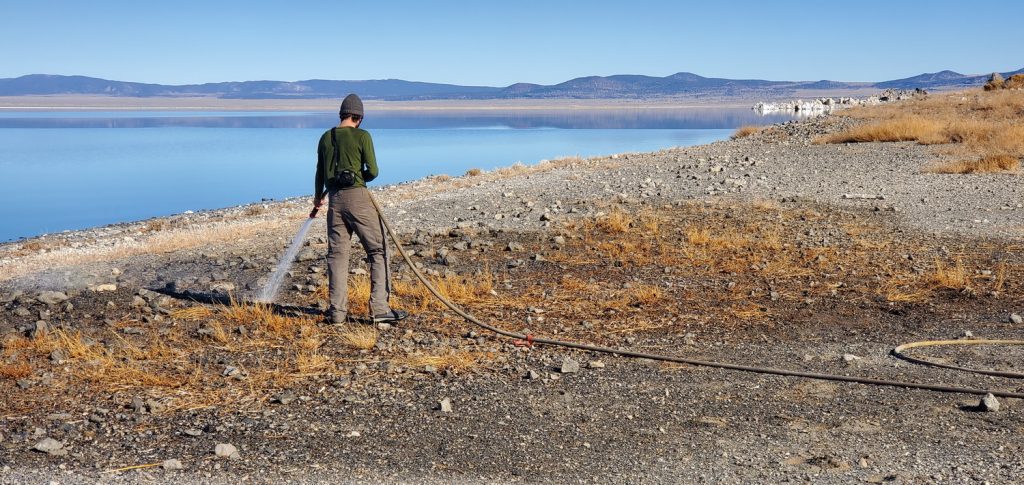
The Committee is also testing the effectiveness of spraying the open ground with alkaline Mono Lake water where the weeds have been removed. This idea was suggested by colleagues grappling with a similar issue at Great Salt Lake—the idea is to make the ground inhospitable to any viable seeds left behind.
Not the gulls’ first rodeo
The plight of the gull colony made headlines in the early 1980s when Mono Lake’s level fell so low that a landbridge formed between Negit Island and the mainland, allowing coyotes access to the usually-protected birds and chicks, and prompting action by the Army National Guard to dynamite a moat in the landbridge in an unsuccessful effort to protect the gulls.
The colony was threatened again in 2017 when the lasting effects of excessive water diversions and California’s five-year drought caused the landbridge to form once again. At that time the Mono Lake Committee put up a temporary fence on the landbridge until the lake rose enough so that the natural water barrier could protect the gulls.
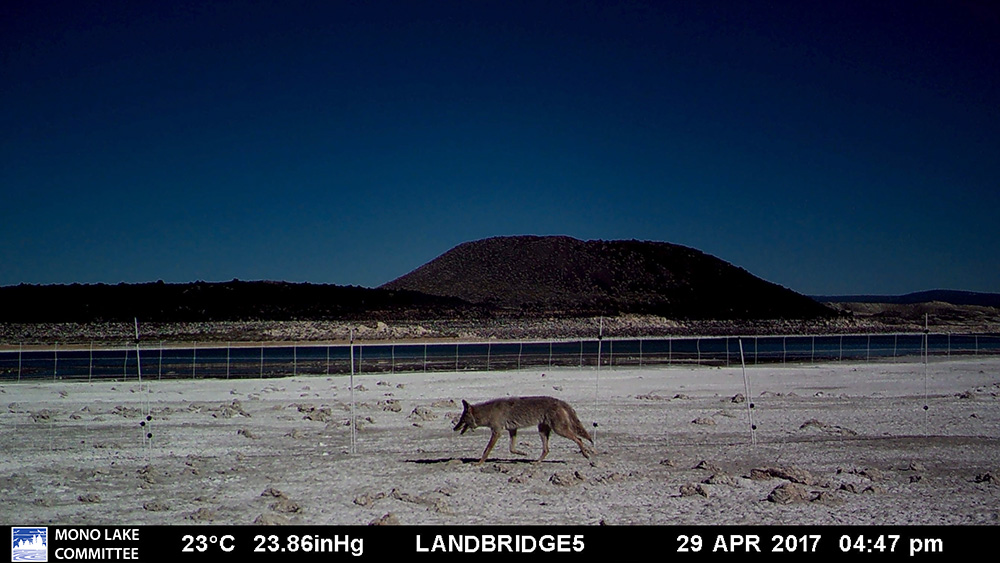
With little time before the gulls return this year, coordinated work crews with Inyo fire staff, Committee staff, and volunteers are working to remove as much Bassia as possible. After the critically low nesting population in 2019, any progress to restore nesting habitat on this islet will provide some relief for California Gulls in 2020.
**Please note that the islands are closed to boaters in order to protect the colony from April 1–August 1 annually.**
More information about the Mono Lake California Gulls:
- Read the Point Blue Conservation Science California Gull reports here.
- LA Times article: Weeds pushing California Gulls out of breeding grounds on Mono Lake
- Mono Lake’s California Gulls make headlines once again
- Invasive weed threatens nesting habitat of Mono Lake’s California Gulls
- Monitoring California Gulls on Mono Lake islands
Top photo courtesy of Point Blue Conservation Science.
